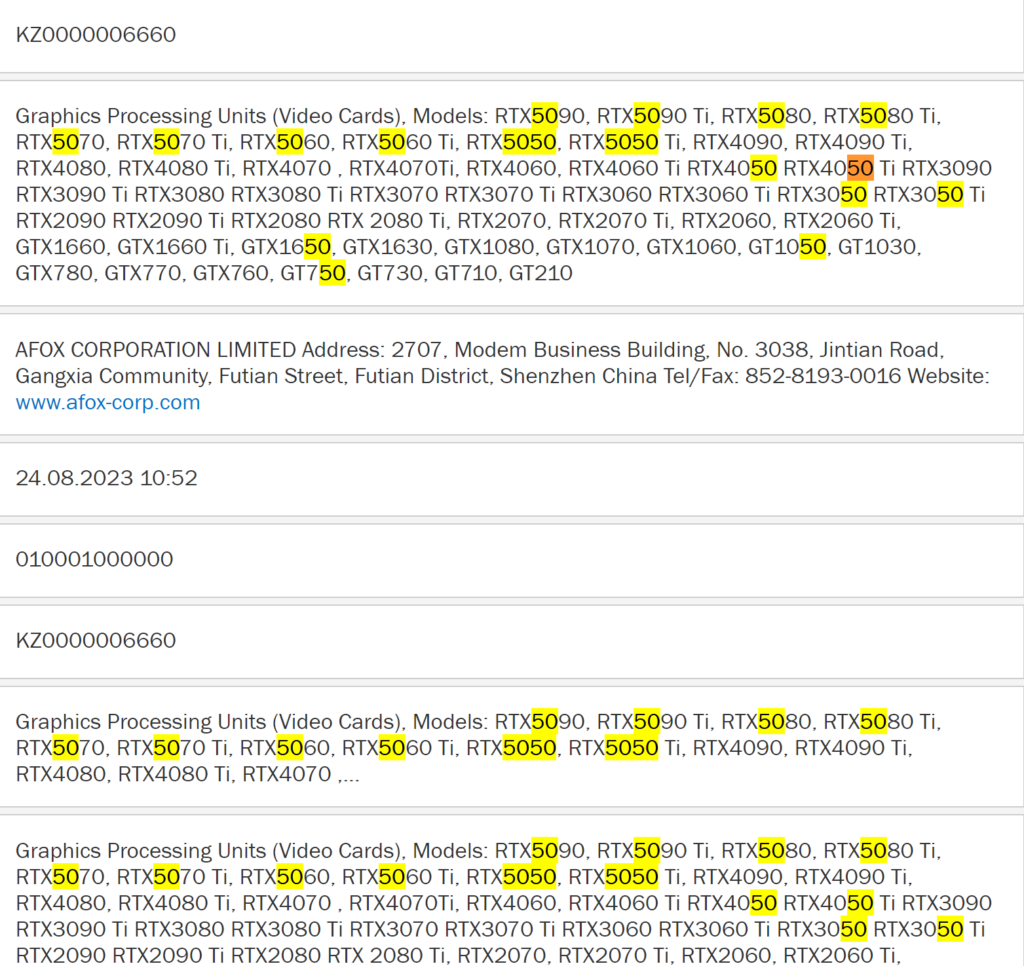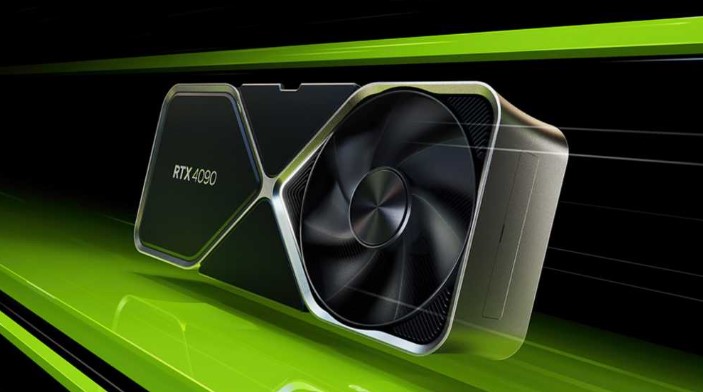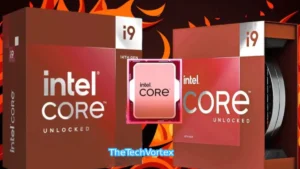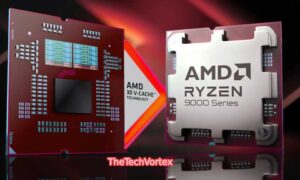In a recent development, AFOX, a Taiwan-based company known for repackaging NVIDIA GPUs, has listed several models from NVIDIA’s speculated next-gen RTX 50 series on the ECC (Error-Correcting Code) database. While this news might pique the interest of gaming enthusiasts and technology aficionados, it’s essential to approach this information with a degree of skepticism, given AFOX’s status as a non-official partner of NVIDIA.
AFOX’s role in the industry involves repackaging and selling NVIDIA GPUs without necessarily adhering to the standard guidelines set by the official board partners. Consequently, the credibility of the information shared by AFOX about NVIDIA’s upcoming graphics card lineup should be taken with a pinch of salt.
The models listed by AFOX include a range of GPUs, such as the RTX 5090 Ti, RTX 5090, RTX 5080 Ti, RTX 5080, RTX 5070 Ti, RTX 5070, RTX 5060 Ti, RTX 5060, RTX 5050 Ti, and the RTX 5050. However, it’s important to note that these listings are speculative and based on AFOX’s early guesswork. NVIDIA’s product development and launch timelines are typically shrouded in secrecy, and it’s unlikely that any concrete information about the next-gen RTX 50 series will emerge until the launch date draws nearer.
It’s worth recalling that AFOX has made similar speculative listings in the past, including the Radeon RX 5950 back in 2020, which never materialized as an actual product. Therefore, while the ECC listing from AFOX does provide some insight into NVIDIA’s potential approach with their “Blackwell” GPUs, it’s far from a definitive confirmation of the lineup’s existence or specifications.

In the context of NVIDIA’s historical release patterns, the NVIDIA next-gen RTX 50 series GPUs are still relatively new to the market. Given this, any potential next-generation RTX 50 series release would likely be some time away, possibly in the vicinity of 2025. Adding to the mix of rumors, there’s also speculation about an “Ada Lovelace” refresh from NVIDIA. The company’s strategy for the Blackwell GPUs is anticipated to push computing performance to new heights, but until more substantial information emerges from official sources, it’s important to manage expectations accordingly.
As the technology landscape continues to evolve, and with NVIDIA being a key player in the graphics card industry, enthusiasts and consumers alike can certainly anticipate exciting advancements. However, until concrete details emerge from NVIDIA’s official channels, including their board partners, it’s advisable to temper expectations and wait for reliable information before getting too carried away with the latest speculations.
NVIDIA GeForce GPU SKUs:
| Generation | PASCAL | TURING | AMPERE | ADA LOVELACE | BLACKWELL |
|---|---|---|---|---|---|
| Process Node | TSMC 16nm | TSMC 12nm | Samsung 8nm | TSMC 5nm | TBD |
| Launch Year | 2016 | 2018 | 2020 | 2022 | 2025 |
| Ultra-Enthusiast | GP102 | TU102 | GA102 | AD102 | GB202 |
| Enthusiast SKU | GP104 | TU104 | GA102 | AD103 | GB203 |
| High-End SKU | GP104 | TU106 | GA104 | AD104 | GB205 |
| Mainstream SKU | GP106 | TU106 | GA106 | AD106 | GB206 |
| Entry-Level SKU | GP107 | TU116/117 | GA107 | AD107 | GB207 |




[…] more, the AMD Navi 32 GPUs are competitively priced, especially the RX 7800 XT, which has garnered recognition as […]
[…] a recent leak, ZOTAC’s upcoming GeForce RTX 4070 SUPER graphics cards have been revealed in three distinct variants, promising an enhanced […]